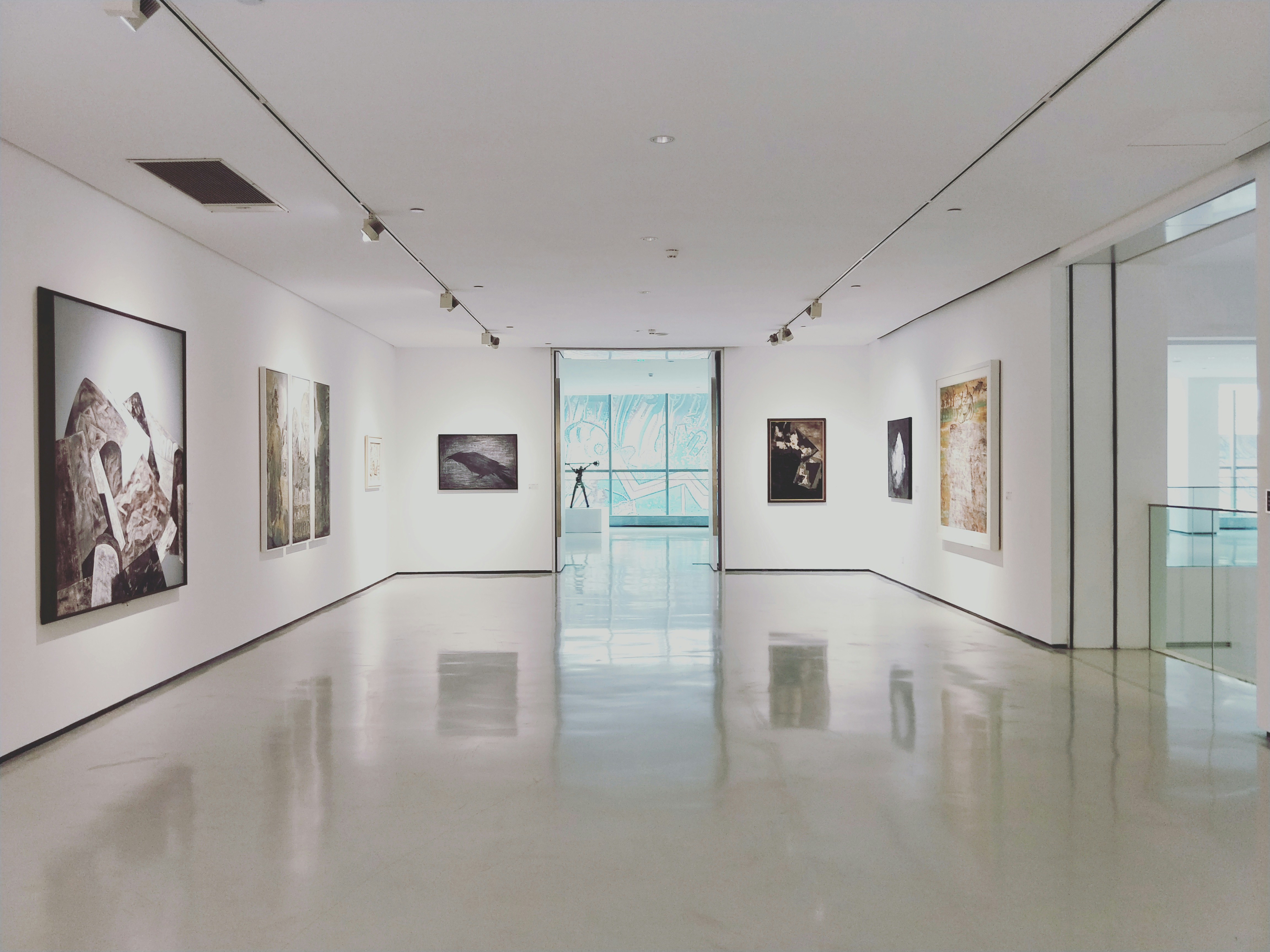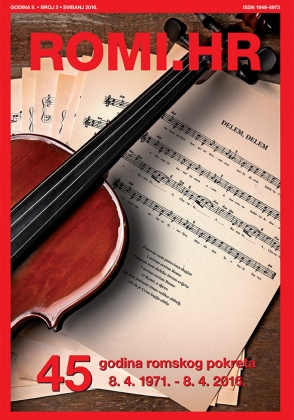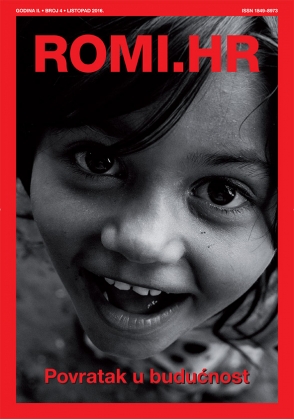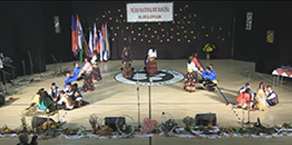Features ROMI.HR
/The Barvalo exhibition was the first large-scale event to bring together contributions from several Romani artists and curators who presented their culture on their own terms. Some members of the Romani community were initially skeptical of the idea of the exhibition, believing that it might be yet another stereotypical vision on them. The history of the Romani has often been retold by outsiders, portraying them as either wandering slackers or unscrupulous thieves. This time, however, the narrative was shaped by the Romani themselves and represented a European breakthrough in reporting on the people.
Prijevod: Morena Mlinar
The Barvalo exhibition was the first large-scale event to bring together contributions from several Romani artists and curators who presented their culture on their own terms. Some members of the Romani community were initially skeptical of the idea of the exhibition, believing that it might be yet another stereotypical vision on them. The history of the Romani has often been retold by outsiders, portraying them as either wandering slackers or unscrupulous thieves. This time, however, the narrative was shaped by the Romani themselves and represented a European breakthrough in reporting on the people.
The idea for the event began in 2014, when University of Vermont assistant professor Jonah Steinberg noticed the absence of Romani in the galleries of the Museum of European and Mediterranean Civilizations (MuCEM), despite their centuries-long presence in Europe. The result of long-term work over about 9 years became an exhibition, developed in collaboration with the European Institute of Roma Arts and Culture (ERIAC). It was designed by a team of nineteen Romani people (Roma, Sinti, Manushi, Gitanos, Travelers) and non-Romani people of different nationalities and profiles.
“Barvalo” was one of the first exhibitions where the history, art and culture of the Romani were presented on such a scale, Steinberg emphasizes. The main difference of this event is that it is based on the voices, vision and experiences of the Romani community.
Held from 10 May to 14 September 2023 at the Museum of Civilizations of Europe and the Mediterranean (MuCEM) in Marseille, the exhibition brought together more than 200 works of art, documents and artifacts from public and private collections such as the Louvre, the National Museum of Natural History in Paris, the Ethnographic Museum Geneva and others. These exhibits cover a wide range of topics, from everyday life to significant historical events and personal stories. The exhibition's title, "Barvalo", which means "rich" and "proud" in Romani, reflects both the centuries of discrimination and persecution of the Romani and their rich heritage.
"Barvalo" features numerous works by Romani artists, sculptors and photographers. These exhibits, like the embodiment of centuries of unspoken words and suffering, are intertwined into one amazing story of this multi-faceted, unique people and encourage visitors to reconsider their views on the Romani and recognize their contribution to European culture. Among the exhibits you can see both traditional crafts and modern artistic works, creating a bridge between the past and the present.
The exhibition itself is divided into two parts. The first part is devoted to the history of Roma in Europe, from the moment of their arrival to persecution, pogroms and oppression, which culminated in the Holocaust, in which up to 500 thousand Romani people died.
Among the exhibits are documents from the archives of Romani, testifying to the slavery of the Roma for 500 years. One of these exhibits is an advertisement for the sale of a “young gypsy woman” for 29 coins.
A separate block is reserved for Roma during Nazism. The exhibition features the work of the late Romani-Austrian writer and artist Seya Stoica, who survived three death camps during World War II. One of the exhibits, in film format, tells the story of Roma's participation in the French resistance during the German occupation.
On one of the walls people could see the so-called “anthropometric maps” of the Roma who lived in France at the beginning of the 20th century, indicating their head size, photographs and fingerprints. According to historical data, all French Romani (there were several groups) were required to always carry identification documents with them, which were designed specifically to restrict their movement and served as the reason for their further deportation from France.
Among other things, the first part of the exhibition is also about dispelling stereotypes in various forms. For example, a tapestry by Małgorzata Mirga-Tas, a Polish artist, reimagines a scene from a 17th-century engraving, depicting Roma not as vagabonds but using brightly patterned fabrics. The exhibition also highlights how stereotypes of Roma permeated 20th-century pop culture, including Playmobil bear trainer figurines and textbook caricatures.
The second part of the event is devoted to issues of identity and self-determination. «The Gadjo Museum», one of the exhibition's galleries, takes a satirical look at the vision of non-Roma inside the community. The installation introduces us to the invented science of "gadjology", based on the word "gadjo" (Romani for "outsider") and showing Romani's perspective on people outside the community. The exhibition in a humorous format emphasizes the absurdity of this phenomenon of the “other” and questions the role of the ethnographic museum as a disseminator of the truth.
An important element of the exhibition are virtual guides representing different Romani groups. Their personal and family stories are intertwined with wider European history, creating a coherent and multi-layered narrative. These stories help visitors gain a deeper understanding and feel for the cultural and historical aspects of Roma life.
At the end of the exhibition, visitors can see a gallery of portraits of famous and lesser-known Roma, thereby telling the viewer: “We also have something to be proud of”. These portraits highlight the richness and pride of the Romani culture, as well as their contribution to the cultural diversity of Europe. The gallery provides a powerful visual testament to Roma's significance.
An important part of the exhibition are films and multimedia installations that allow visitors to immerse themselves in the world of Romani through sounds, images and stories. It helps to create a more vivid and emotional perception of the presented material.
The exhibition hosts master classes and workshops where visitors can gain a deeper understanding of various aspects of culture, including music, dance and traditional crafts that promotes active involvement and interaction with the people.
The Barvalo exhibition marks a growing interest in Romani art in Europe, Steinberg notes. The opening of the European Institute for Roma Arts and Culture in Berlin in 2017 and the recognition of Roma artist Mirga-Tas at the Venice Biennale indicate significant changes. Today, the voices of the Roma are becoming louder and their cultural heritage is finally receiving the recognition it deserves.
Events of this format not only introduce Europeans to neighboring people on many levels, but also allows Romani communities to learn about themselves, so that they can firmly and confidently declare themselves “barvalo!”.
 Back to Features
Back to Features













